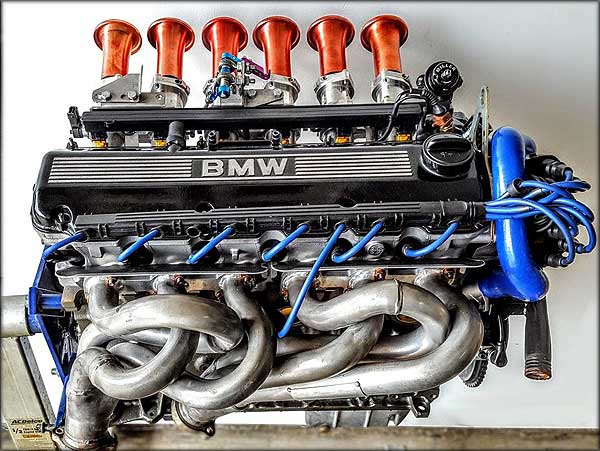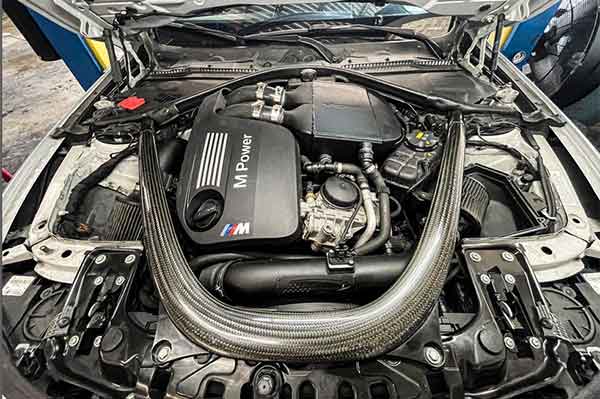A Comprehensive Guide to Recognizing BMW Engine Specifications
Exploring the Development of Combustion Engines in Modern Transport Solutions
As we browse the landscape of contemporary transportation, the evolution of burning engines stands as a testimony to human resourcefulness and design prowess. The interplay of background, modern technology, and environmental problems in forming the trajectory of burning engines creates a narrative that is both engaging and insightful.
Early Beginnings of Combustion Engines
Exactly how did the concept of combustion engines first arise in the onset of transportation advancement? When the principles of internal combustion were first checked out, the origins of combustion engines can be mapped back to the 17th century. In 1673, Christian Huygens conceptualized a standard inner burning engine that utilized gunpowder to produce power. Nevertheless, it wasn't up until the late 19th century that sensible applications of burning engines in transportation began to emerge.
The advancement moment featured the invention of the initial effective gasoline-powered engine by Karl Benz in 1885 - bmw engine. This engine paved the means for the development of the modern auto, changing transportation systems worldwide. Subsequent innovations by Nikolaus Otto and Gottlieb Daimler better fine-tuned burning engine innovation, bring about the automation of cars and the quick growth of the transport industry
These early burning engines were characterized by their simpleness and efficiency, laying the structure for the complex and powerful engines used in contemporary transportation systems. The evolution of burning engines has been important in shaping the method we travel and transfer products, noting a substantial landmark in the background of transport development.
Change to Internal Combustion Innovation
The change to interior combustion technology marked a pivotal shift in the development of transport systems. This change began in the late 19th century, with developers like Nikolaus Otto and Gottlieb Daimler establishing the first successful internal combustion engines. These engines revolutionized transportation by offering an extra powerful and efficient alternative to steam engines and electrical motors.
One of the key advantages of interior combustion engines was their capacity to be reduced to fit into cars, leading to the advancement of bikes and autos. This change from bulky, stationary engines to compact, mobile ones paved the means for the contemporary transport systems we see today.
The transition to interior burning technology also spurred developments in fuel innovation, bring about the advancement of gasoline and diesel as key fuel sources for vehicles. This shift not only made transport a lot more easily accessible to the masses however likewise laid the structure for the oil and gas market to become essential to international economic climates.
Influence of Combustion Engines on Transportation
The fostering of combustion engines in transport systems militarized an extensive shift in the effectiveness and speed of global flexibility. Combustion engines revolutionized transport by providing a versatile and dependable resource of power for various automobiles, consisting of autos, ships, airplanes, and trucks. This development considerably enhanced the capability for individuals and goods to conform fars away in shorter time structures, causing enhanced connection between areas and countries.
Additionally, the prevalent usage of combustion engines has had a considerable influence on financial growth. The capability to move goods successfully has actually spurred trade and commerce, allowing organizations to increase their markets and reach customers worldwide. This has promoted financial growth and globalization, as products can now be moved much faster and in bigger quantities than in the continue reading this past.
However, the ecological effect of combustion engines can not be overlooked. The burning of nonrenewable fuel sources has actually resulted in air contamination and greenhouse gas discharges, adding to environment modification and posing health and wellness threats to populaces. bmw engine. Consequently, there is a growing focus on establishing alternative propulsion modern technologies to mitigate these negative impacts and develop an extra lasting future for transport
Innovations in Combustion Engine Design
Numerous advancements in combustion engine style have actually driven the development of transportation systems why not check here over the years. One significant development is the advancement of turbocharged engines, which utilize exhaust gases to drive a generator that compresses incoming air, permitting more gas to be charred, causing increased power outcome without a substantial boost in engine dimension. Furthermore, direct injection innovation has improved gas efficiency and efficiency by exactly managing the amount and timing of fuel injected right into the combustion chamber. Variable shutoff timing systems have likewise reinvented engine design by maximizing air movement at different engine speeds, enhancing both power and efficiency. Another considerable advancement is the assimilation of lightweight materials such as carbon fiber and aluminum alloys, minimizing general engine weight and improving lorry gas economy. In addition, developments in computer-aided design have enabled designers to enhance engine efficiency and effectiveness with simulations before physical prototypes are constructed, saving time and sources in the advancement procedure. These technologies collectively add to the continual renovation of combustion engines in contemporary transport systems.
Future Trends in Burning Engine Development
With modern technology developments driving continual development, the future of burning engine development is positioned to revolutionize transport systems globally. One of the crucial fads in combustion engine growth is the push towards better efficiency and decreased exhausts.
Another famous fad is the adoption of hybrid innovations in burning engines. Hybrid engines integrate standard burning technology with electric power, using boosted fuel efficiency and reduced exhausts. As the auto industry shifts towards electrification, hybrid burning engines are viewed as a transitional remedy that bridges the gap between traditional automobiles and totally electrical ones.
Moreover, the integration of wise innovations, such as expert system and information analytics, is anticipated to play a substantial role in the future of burning engine growth. These technologies can maximize engine efficiency in real-time, leading to extra effective burning procedures and enhanced overall lorry efficiency. Accepting these future trends will not just drive development in burning engine development however additionally add to a more environmentally pleasant and sustainable transportation ecological community.

Conclusion
To conclude, the development click here to find out more of burning engines in contemporary transportation systems has been marked by substantial developments in innovation and style. From the early beginnings of combustion engines to the transition to internal combustion innovation, these engines have had an extensive effect on transportation. Advancements in burning engine design remain to drive progression in this field, with future trends concentrating on further boosting performance and decreasing exhausts. The future of combustion engines in transportation looks encouraging as research study and development efforts remain to press limits.
The origins of burning engines can be mapped back to the 17th century when the principles of internal combustion were first explored. These engines revolutionized transport by supplying an extra powerful and effective option to heavy steam engines and electric motors.
